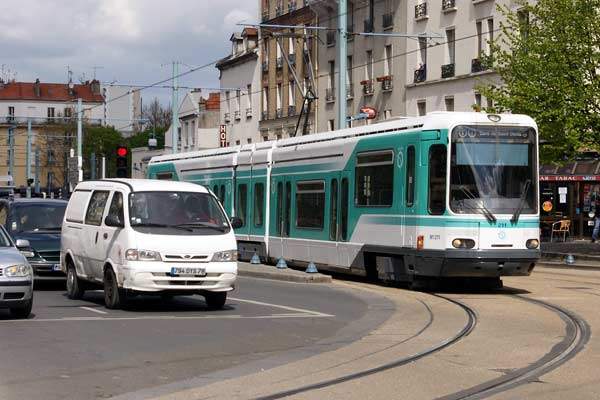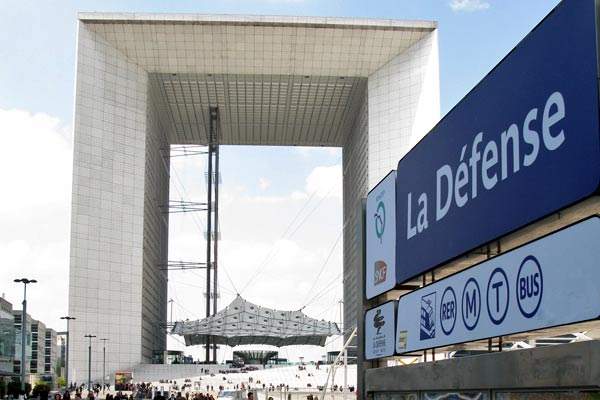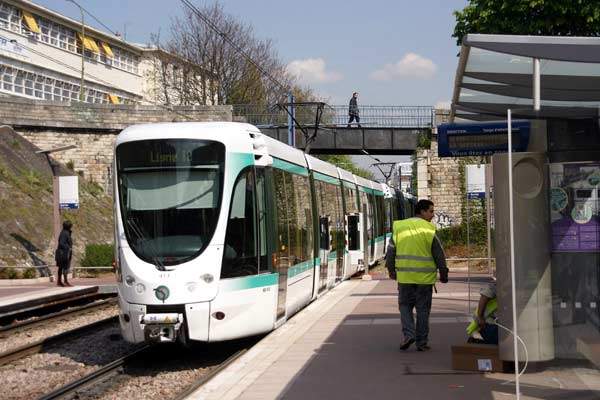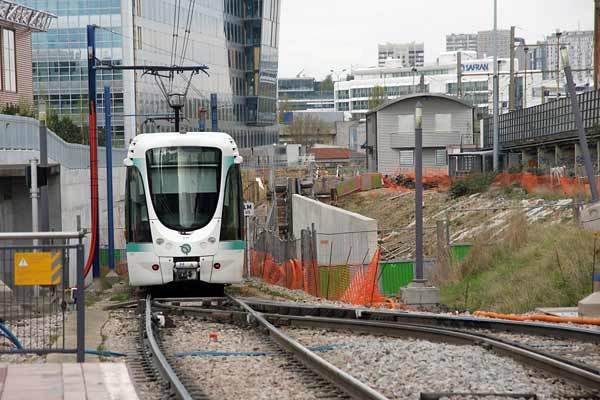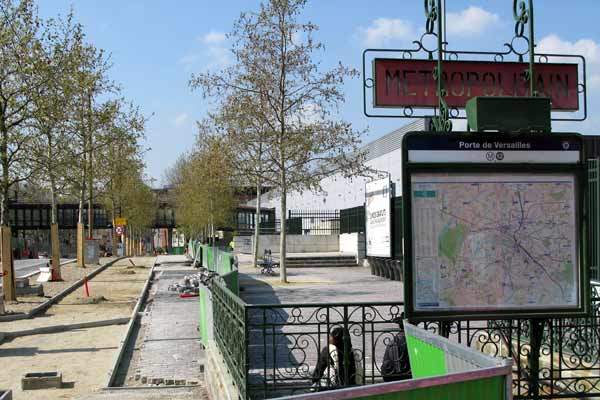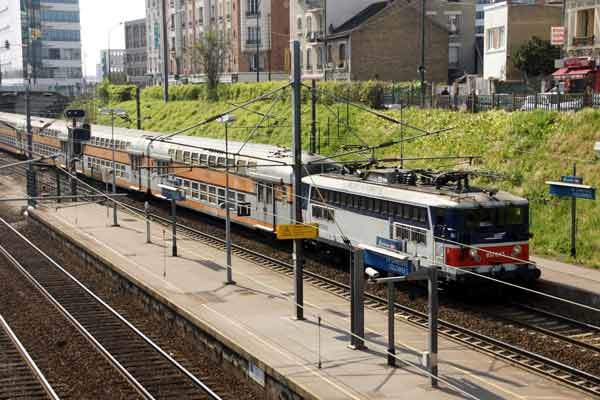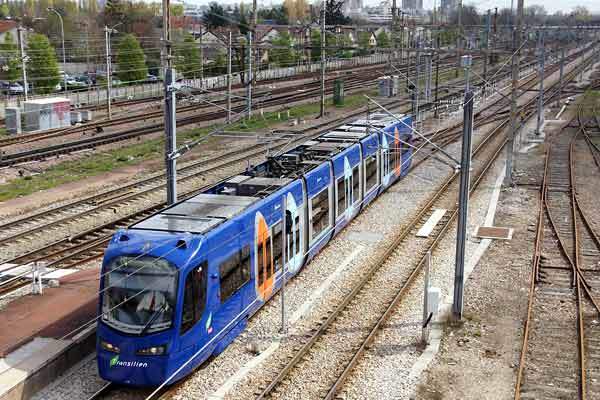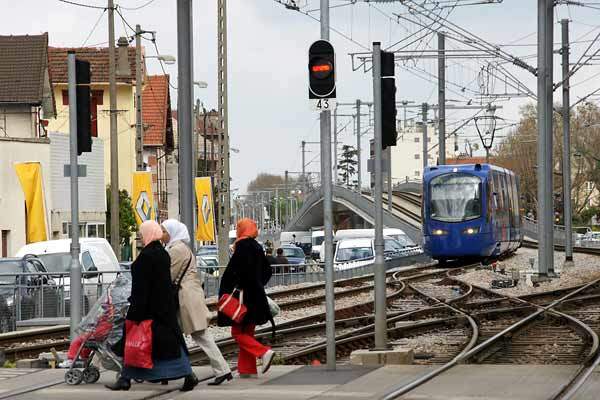Before the opening of T3 within the Paris city boundary, the revival of light rail had already begun in the suburbs. Routes T1 and T2 are, like T3, operated by Régie Autonome des Transports Parisiens (RATP). Although sharing the ‘T’ identity, T4 is part of Transilien, the arm of state train operator SNCF for Ile-de-France regional services. All these lines are subject to extension plans of varying certainty and ambition.
The project
The 1992 opening of T1 marked a return for trams to the conurbation where a previous extensive system had closed by the 1930s. The new T1 represented a statement of intent to deploy surface-running light rail to revive the fortunes of a tract of largely run-down neighbourhoods in the north east of the city.
Unlike T1, T2 was almost totally based upon a heavy rail alignment. Except towards the eastern end, there was less of a remit for urban revival and the project was more related to the mode’s suitability in providing a better service, notably for the emerging La Défense commercial centre.
Much of T2 by the Seine in the south west and west of the city serves established affluent districts.
In common with T1 and T2, T4 fills the expanding brief of providing orbital journeys with an RER (suburban heavy rail) connection at either end, particularly relevant to Paris having a high level of commuter traffic and the Metro’s limited coverage of outer districts.
Part of the Ile-de-France regional plan, the transformation of the heavy rail line between two RER stations on separate main lines, Bondy and Aulnay-sous-Bois, was aimed at providing a better service for residents as well as improved interchanges. Adding three stations, easier access and higher frequency, the line has become less prone to troughs of demand either side of the commuter peaks.
Infrastructure
With little of the beautification and restructuring of urban space that became a trademark of later French light rail schemes, T1’s initial 9km east from Saint-Denis RER Line D station and the 3km extension added in 2003 took it to an over-bridge interchange with the RER Line E station at Noisy-le-Sec.
In spite of mainly running within reserved space, of these three projects, the T1 infrastructure is closest to a traditional tramway with some tight curves following street layouts, frequent stops, road intersections and long end-to-end times relative to length.
The heavy rail origins of T2 and T4 are evident in the adjoining heavy rail platforms at termini, some retained buildings and the track itself. Although greatly opened out for better access at former stations and with new stops added, the original mainline electrification system was retained on T4.
Rolling stock
Paris initially equipped T1 and T2 with the part low-floor TFS-2, a development second stage of the first modern French tram, the GEC-Alsthom Tramway Français Standard (TFS).
With the TFS model discontinued, re-equipment of T2 was with the 100% low-floor Alstom Citadis 302 from 2005. The entire 35 TFS-2 fleet eventually became allocated to T1. With increasing patronage, the normal T2 formation is two five-module sets.
For T4, a two-system five-unit variant of the Siemens Avanto tram-train was chosen. Although the 15 sets are confined to the T4 route and dedicated platforms at the termini when in passenger operation, they use the main line west from Bondy to reach the SNCF Noisy-le-Sec depot for maintenance and storage.
SNCF has also ordered the 80% low-floor Avanto for the Mulhouse-based tram-train scheme due to open in 2010.
The 105km/h (66mph) capability is not used, with a whole route average of around 25km/h (16mph) made possible by fast-running sections at either end of T4 without road crossings.
Signalling and communications
Line-of-sight principles apply on all lines, with T4 sets running under mainline signalling for depot transfers. Tram priority applies at light controlled road intersections.
The T4 has now joined T1–T3 within the RATP ‘t+’ ticketing system and all are covered by appropriately zoned passes such as Mobilis and Paris Visite. RATP’s multi-language website carries itinerary and interactive maps for cross-mode journey planning.
The future
Authorised in 1997, a 2.3km (1.4 mile) three-stop extension from T2 southern terminus Issy-Val de Seine to Porte de Versailles will give an interchange with eight bus routes, T3 (but not for through running) and two Metro stations. A four-minute peak service is envisaged from the expected opening in mid-2009, with six minutes to cover the new section.
Due to open in late 2011, a seven-station T2 extension will proceed 4.2km (2.6 miles) north from the interchange beneath La Défense. Part of the remit for orbital journeys, it will provide a two-stop interchange with SNCF La Garenne Colombes Transilien on the Saint-Lazare line.
These extensions require increasing the tram fleet and will add non-heavy rail-derived infrastructure to T2, including modification of the existing Pont de Bezons Seine road crossing. The journey between the new termini will take 40 minutes.
The busiest Paris tramway, T1 is being extended by 4.9km (3 miles) west from Gare de St Denis to the forthcoming Asnières-Gennevilliers-Les Courtilles terminus on a Metro Line 13 extension. Due to open in late 2011, the new T1 section will have ten stops and a four-minute peak service.
Another longer-term RATP tram project is a T1 extension from Noisy-le-Sec. This hemmed-in terminus would require splitting of line directions onto separate streets to proceed to Montreuil-Théophile Sueur.
With onward extension it would eventually contribute to a light rail circuit (‘Rocade Grand Tram’) of Paris involving T2, T3 and their respective extensions. A guided busway (‘tramway sur pneu’) is being built northwards from intermediate T1 station Marché de Saint-Denis to Garges-Sarcelles on RER Line D for opening in 2011.
The least specific plans relate to T4, which remains a stand-alone project. The Avanto fleet presently uses only the 25kV ac capability, with the 750V dc provision presumably included with a view to future extended operations over tram-type infrastructure.

